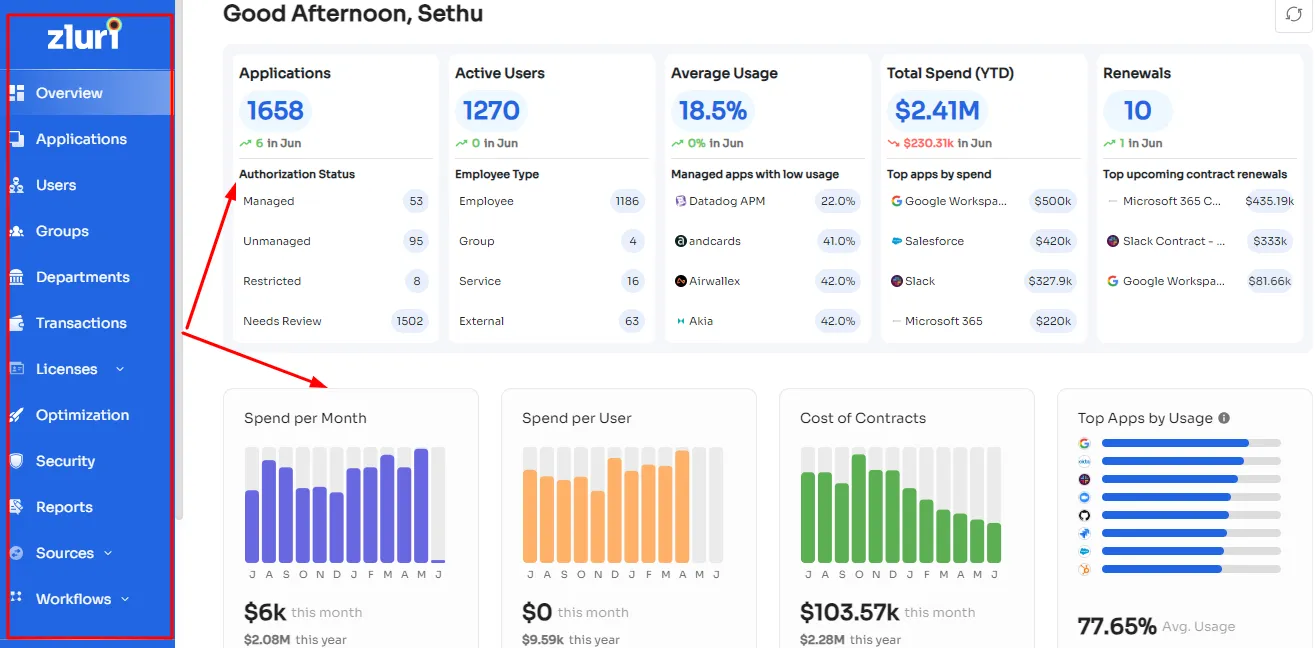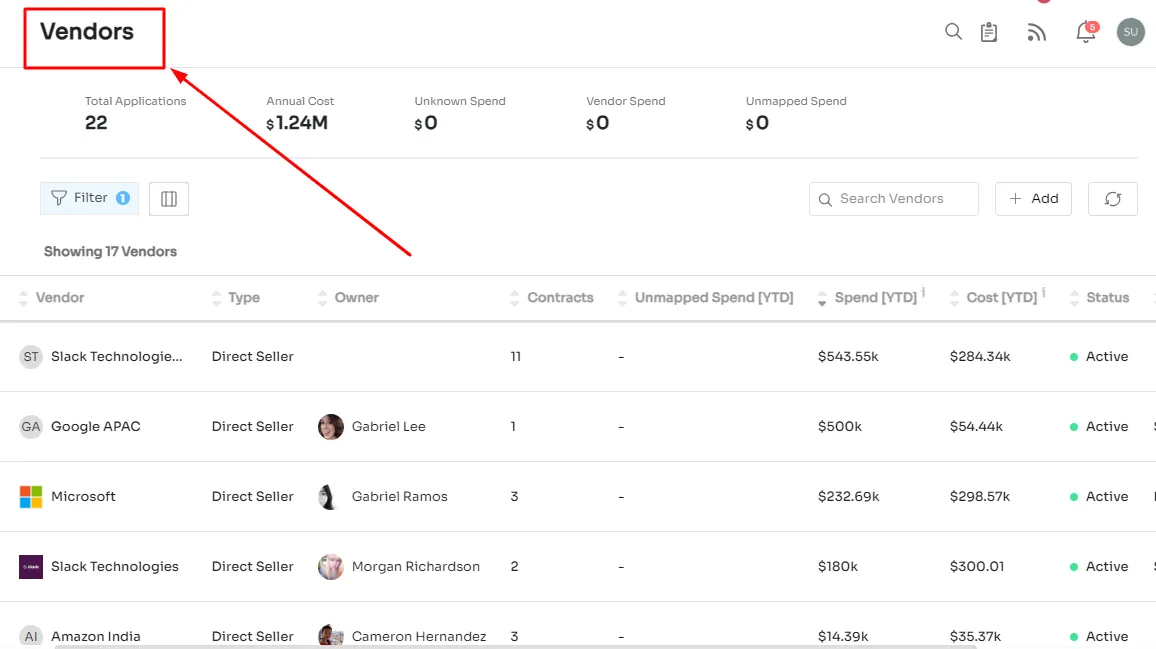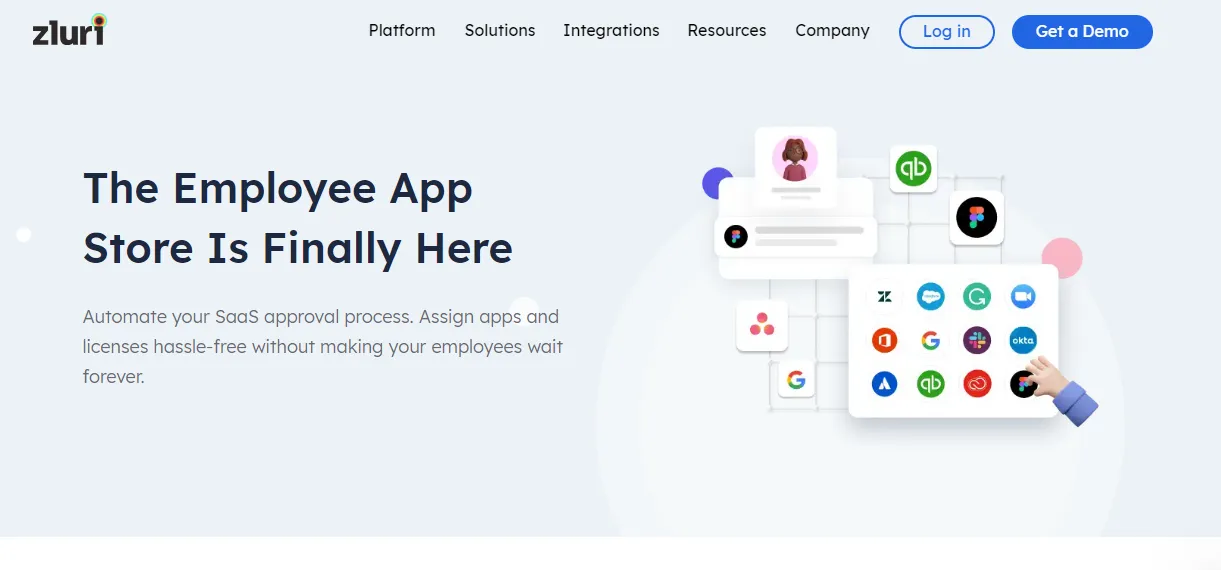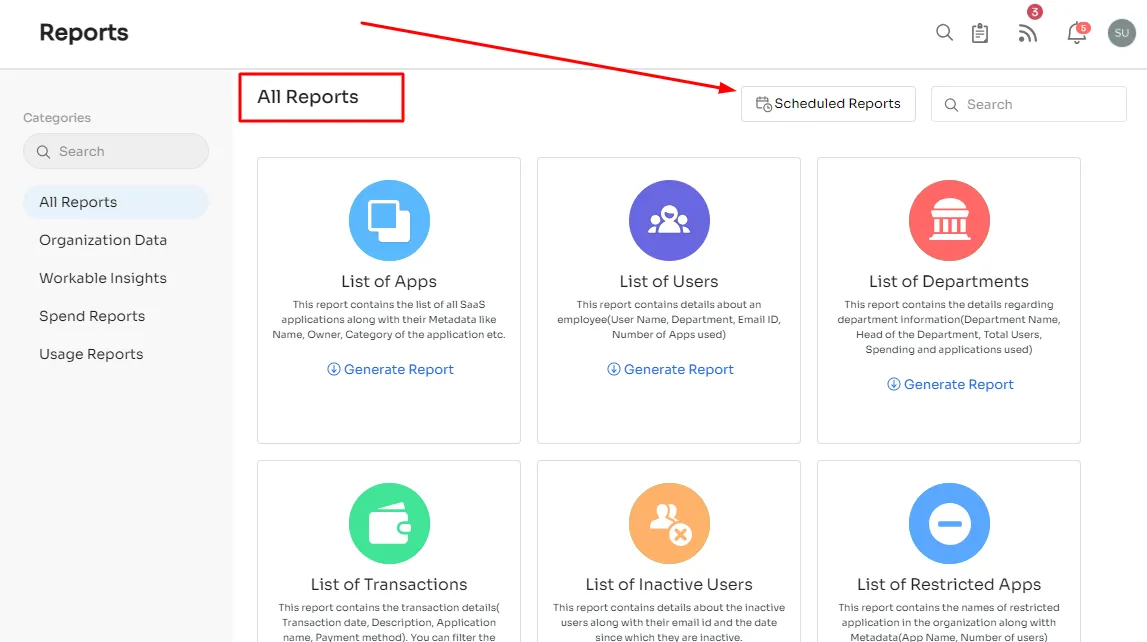MuleSoft and SnapLogic are two prominent integration platforms with powerful capabilities to connect and integrate various systems. When it comes to selecting the ideal integration platform for your IT team, IT managers must carefully evaluate factors like functionality, pricing, support, and overall suitability to meet their specific requirements.
This MuleSoft vs SnapLogic comparison explores the key features, strengths, and differences to help you make an informed decision and determine which one aligns best with your team's integration needs.
Integration platforms are critical in enabling seamless data flow and connectivity between applications and systems. Two prominent players in the integration platform market are MuleSoft and SnapLogic.
SnapLogic offers an innovative iPaaS (Integration Platform as a Service) solution that enables seamless connectivity between various data sources, on-premises business software tools, and SaaS applications. MuleSoft, on the other hand, is an enterprise service bus (ESB) built on Java, offering your IT teams a comprehensive suite of prebuilt templates, connectors, and integration patterns to connect applications, data, and devices.
While both platforms offer powerful capabilities for integration, they have distinct features and strengths that cater to different organizational needs.
For e.g., When it comes to customization options, SnapLogic provides ample opportunities than MuleSoft. If your priority is flexibility, SnapLogic provides various tools such as REST APIs, SDKs, and more to customize your integration processes. The platform's extensive collection of connectors becomes instrumental in mapping connections between different systems, streamlining the integration workflow, and facilitating smooth data flow across diverse systems.
The above example is just one of many considerations to keep in mind while choosing an integration platform. It is essential to evaluate numerous other factors before making a decision. So, let's begin exploring these factors in detail!
5 Key Comparison Factors: MuleSoft vs SnapLogic
To make an informed decision about selecting the ideal integration platform for your organization, thoroughly see MuleSoft vs SnapLogic comparison.
While both platforms offer robust capabilities for integrating different systems, they do exhibit variations in specific areas. Let's explore how MuleSoft and SnapLogic stack up against each other in terms of their features, unique categories, integration speed, and more.
1. Solution Offerings
One notable aspect that sets MuleSoft and SnapLogic apart is their unique category offerings. MuleSoft Anypoint Platform stands out with its comprehensive range of offerings, including API Platforms, API Design, Automation capabilities, Business Instant Messaging, Message Queue (MQ), and API Marketplace. This wide array of features enables users to tackle various integration challenges and cater to diverse organizational needs.
On the other hand, SnapLogic Intelligent Integration Platform (IIP) carves its niche in the market by focusing on specific categories. It excels in Big Data Integration Platforms, providing robust capabilities for handling large volumes of data and complex data transformation processes.
The platform provides enterprise automation, enabling teams to streamline their integration workflows and enhance operational efficiency. Moreover, SnapLogic offers integration solutions for SAP Store, allowing seamless connectivity with SAP systems and facilitating integration within SAP-centric environments.
With their unique category offerings, both MuleSoft and SnapLogic address different integration requirements and cater to specific needs. Understanding these distinctions is crucial in determining which platform aligns better with your organization's integration goals and priorities.
2. Integration capabilities
While both MuleSoft and SnapLogic excel in providing robust integration capabilities, allowing your team to seamlessly connect and integrate various applications and systems, they have some contrasting features that set them apart.
Let’s have a look at each integration scope in detail:
- Data Integrations
MuleSoft's DataWeave data language is purpose-built for data integration, leveraging the high-performance Mule runtime engine of the Anypoint Platform. This combination allows Anypoint Platform to handle real-time and batch processing use cases at scale, providing a template-driven approach to development. DataWeave fully integrates with Anypoint Studio's and DataSense's graphical interfaces, simplifying complex data integration tasks.
In contrast, SnapLogic offers a versatile and scalable data integration solution that enables users to connect and load data from both on-premises and cloud-based sources. It provides flexibility in using either Extract, Transform, Load (ETL) or Extract, Load, Transform (ELT) data load patterns.
Additionally, SnapLogic allows users to enrich their data in a cloud data warehouse and establish connections to all their applications using reverse ETL. This approach eliminates data silos and addresses the challenges of complex integration tool sprawl.
While MuleSoft's DataWeave focuses on native data integration within the Anypoint Platform and emphasizes real-time and batch processing, SnapLogic provides a comprehensive solution that caters to various data integration scenarios, enabling seamless connectivity across different data sources and applications. The choice between the two platforms depends on specific requirements, such as the need for template-driven development or support for diverse data sources and integration patterns.
- App Integrations
SnapLogic offers an iPaaS platform with a no-code/low-code approach, equipped with an extensive library of pre-built connectors called Snaps. These Snaps provide seamless connectivity to enterprise applications, enabling IT teams to effectively manage application sprawl, ensure synchronization, and foster trust in their data.
Unlike SnapLogic, which treats application integration and data integration as separate entities, MuleSoft Anypoint Platform seamlessly combines both aspects. It recognizes that applications and data are closely intertwined and interdependent.
By not differentiating between application integration and data integration, Anypoint Platform ensures that data can flow effortlessly across various systems. This means that when integrating applications using the Anypoint Platform, the data associated with those applications can be seamlessly transferred and shared, allowing for a smooth and cohesive flow of information.
This integrated approach eliminates the need for separate and complex integration processes for applications and data.
- Pre-build Connectors
SnapLogic offers access to a vast library of more than 700 Snaps. These Snaps serve as pre-built connectors, facilitating connections to various data sources, including big data tools, ERPs, APIs and protocols, SaaS applications, and social media platforms. With SnapLogic, users can seamlessly integrate with popular destinations such as Amazon DynamoDB, Amazon Redshift, COBOL, and many others.
In contrast, MuleSoft connects over 420 data sources, including databases, network services, SaaS platforms, protocols, and storage resources. Additionally, MuleSoft allows developers to create custom sources using the Mule SDK, further expanding the range of integration possibilities within the platform.
The choice between the two platforms depends on specific integration requirements, preferred user experience, and the ecosystem of applications and systems that need to be integrated.
3. Documentation & Support Provided
MuleSoft provides a range of support options for its users. Users can submit tickets through the website's portal, access the user community for assistance, communicate with the customer support team via email, or utilize the provided phone number. MuleSoft's platform also offers comprehensive documentation and training materials, ensuring users have access to thorough resources.
On the other hand, SnapLogic also offers multiple avenues of support, including support via email, a phone number, and a contact form. Users can also engage with the community to interact and exchange ideas. The platform provides documentation in the form of case studies, blog posts, eBooks, and more, offering a variety of resources to users seeking guidance.
Both MuleSoft and SnapLogic prioritize customer support and offer various channels for users to seek assistance. Your choice between the two platforms may vary based on your preferences regarding support channels and the type of documentation resources that align with your organization's requirements
4. API management capabilities
MuleSoft and SnapLogic offer robust API management capabilities that empower your organizations to efficiently create, manage, and secure APIs.
MuleSoft offers a comprehensive solution for handling the entire lifecycle of APIs. It enables you to streamline your APIs' creation, management, and security with just a few clicks. The platform's intuitive interface allows you to streamline the API creation process, enabling you to define endpoints, specify data formats, and set security protocols effortlessly.
MuleSoft's extensive library of pre-built connectors and integration patterns further simplifies the development process, allowing you to accelerate API creation and integration with other systems. Additionally, MuleSoft provides a \"one-click\" API testing feature, enabling confident API deployment.
Once your APIs are deployed, MuleSoft offers robust management capabilities. You can monitor API usage, track performance metrics, and gain valuable insights into API consumption patterns. Additionally, it ensures the security of your APIs throughout their lifecycle. You can implement authentication, authorization, and encryption measures to protect your APIs and control access to sensitive data.
In contrast, SnapLogic does not provide comprehensive API lifecycle management capabilities but offers a seamless API management experience. While SnapLogic may not cover the entire spectrum of API lifecycle stages, it still offers robust features and tools for managing APIs efficiently. With SnapLogic, you can handle essential aspects such as API security, access management, and monitoring to ensure smooth API operations.
You can secure your APIs with policies, manage client access, and group APIs into products, all accomplished in a few simple steps. The platform lets you gain critical insights into your API programs, facilitating effective monitoring and analysis. By managing all your APIs and microservices from one centralized location, SnapLogic simplifies the management process and enhances overall efficiency.
Both MuleSoft and SnapLogic provide robust API management capabilities, ensuring organizations can securely manage their APIs while gaining valuable insights. The choice between the two platforms depends on specific requirements, preferences, and the overall integration needs of your organization.
5. Pricing & Rating
Let's see MuleSoft vs SnapLogic based on their pricing and rating. Both platforms offer a free trial for users to experience their capabilities firsthand.
MuleSoft offers an enterprise-level integration solution that maintains its high-quality features while providing cost-effective pricing. It offers three comprehensive packages to cater to your specific needs:
- Gold Package: The Gold package offers core features that allow you to begin your journey with APIs and integrations. It provides a solid foundation for getting started with the integration process.
- Platinum Package: It offers advanced capabilities to support enterprise-wide deployment. This package includes advanced features that enable seamless integration across the entire organization.
- Titanium Package: The Titanium package provides mission-critical features and priority support, ensuring that IT teams can leverage the platform to its fullest potential while receiving top-notch assistance.These three packages ensure that users have the flexibility to choose the right level of features and support that aligns with their integration goals and requirements.On the other hand, SnapLogic provides customized packages tailored to the specific needs of different organizations, regardless of their size. SnapLogic offers flexible pricing plans to accommodate different organizational needs. The pricing starts from $9995.00 per year, and they provide both free and subscription-based models to cater to the specific requirements of their customers.You can request a demo for both tools to explore their functionalities and determine which one best suits your specific needs.
Taking into account the above customer ratings can provide valuable insights into the experiences of other users. This insight can assist you in evaluating which tool aligns better with the specific needs of your IT team.
After reviewing this comparison, you will clearly understand the best tool for your specific needs. However, there is an alternative tool that deserves your attention: Zluri. With its array of exceptional integration features, Zluri has the potential to streamline your IT operations and serve as a viable alternative to tools like MuleSoft and SnapLogic.
But what exactly is Zluri, and what sets it apart? Let's delve into a concise overview of its capabilities.
Zluri: The Best Integration Platform For Your IT Teams
Zluri’s lifecycle management platform offers a robust iPaaS solution that empowers you to connect and manage your SaaS applications beyond the limitations of off-the-shelf integrations. With over 300 API integrations available, Zluri offers a vast library of pre-built connectors to streamline and simplify the integration process.
By leveraging Zluri's extensive collection of API integrations, your IT team can seamlessly connect various SaaS applications and unlock the full potential of data and systems. Whether it's integrating popular CRM platforms, collaboration tools, marketing automation software, or any other SaaS applications, Zluri provides the necessary connectivity to ensure smooth and efficient data flow.
With Zluri's Seamless Application Connectivity, you gain valuable insights into user behavior, app usage, and expenditure. You can integrate Zluri with your Identity Management platforms such as Okta and OneLogin to gain precise control over your SaaS applications. Effectively manage users and effortlessly assign or revoke permissions for all your applications.
The platform's flexible architecture allows for customization and configuration, ensuring that the integration process aligns perfectly with the organization's specific needs. Your IT teams can easily navigate through the platform, select the desired API integrations, and configure the integration settings without the need for extensive coding or technical expertise.
In addition to its extensive API integrations, Zluri offers comprehensive management capabilities, including monitoring, security, and governance. Your IT teams can centrally manage the integrations, track performance metrics, ensure data security, and enforce compliance policies, all from a unified platform.
Last but not least, Zluri's seamless integration capabilities enable us to automate numerous IT tasks, such as onboarding, offboarding, approval workflows, renewal & vendor management, and more. This automation brings numerous benefits, including increased efficiency and productivity.
Here are a few critical automations offered by zluri:
- Automated SaaS management:The tool helps you gain comprehensive control over your SaaS applications with its unified SaaS management. It aids you in managing, optimizing, and automating all your SaaS operations in one place. Also, as per Kuppingercole's report, your IT team can enhance visibility, prevent Shadow IT, and reduce costs by using Zluri to optimize license and right-sizing your SaaS stack.

- Smooth Vendor Management workflows: Zluri provides an automated vendor management workflow that seamlessly integrates with your core business system, ensuring a streamlined and efficient process. It simplifies vendor management by providing a centralized repository for all your IT contacts, ensuring easy access when needed. With all your SaaS agreements consolidated in one place, you can ensure adherence to essential standards such as SOC 2, HIPAA, GDPR, PCI DSS, and more.

- Automatic Renewal alerts: Zluri's proactive notifications ensure you never miss contract and payment renewals. It sends timely reminders at key intervals, including 30 days, 15 days, and 1 day before contract expirations, as well as 7 days and 1 day before payments are due. You can stay on top of renewals with Zluri's reliable reminders.

- Automated Onboarding and Off-boarding workflows: Zluri simplifies and automates time-consuming IT tasks like employee onboarding and offboarding, ensuring efficiency and security. Its unique and use case-driven approach to workflow automation analyzes each new employee's job profile, seniority, and department to provide personalized access to applications. Similarly during offboarding, it ensures smooth offboarding by revoking access to individual applications used by employees and creating backups of their data before terminating licenses.

- Automated approval workflow: Zluri automates approval workflows for your IT teams handling employee requests for additional SaaS apps. The self-service \"Employee App Store\" simplifies the process, allowing employees to request apps effortlessly. With Zluri, IT teams can create automated workflows based on triggers and conditions, ensuring quick and accurate app approvals. By using factors like job roles and seniority levels, only authorized individuals can approve or deny requests, eliminating delays and bottlenecks.

- Automated User Monitoring and Reporting: By seamlessly integrating with existing systems and workflows, Zluri offers real-time insights into SaaS app performance through comprehensive usage data. This enables IT teams to swiftly detect and address potential issues before they escalate, ensuring smooth operations and proactive problem-solving. With Zluri, your IT teams can stay ahead of IT challenges and maximize productivity. Additionally, Zluri provides an extensive selection of 22 reports that deliver up-to-the-minute insights into your SaaS utilization, expenses, and potential security vulnerabilities.

- By eliminating manual processes and streamlining workflows, Zluri empowers your IT team to focus on more strategic initiatives. Schedule a demo right away and see it for yourself!









.svg)














